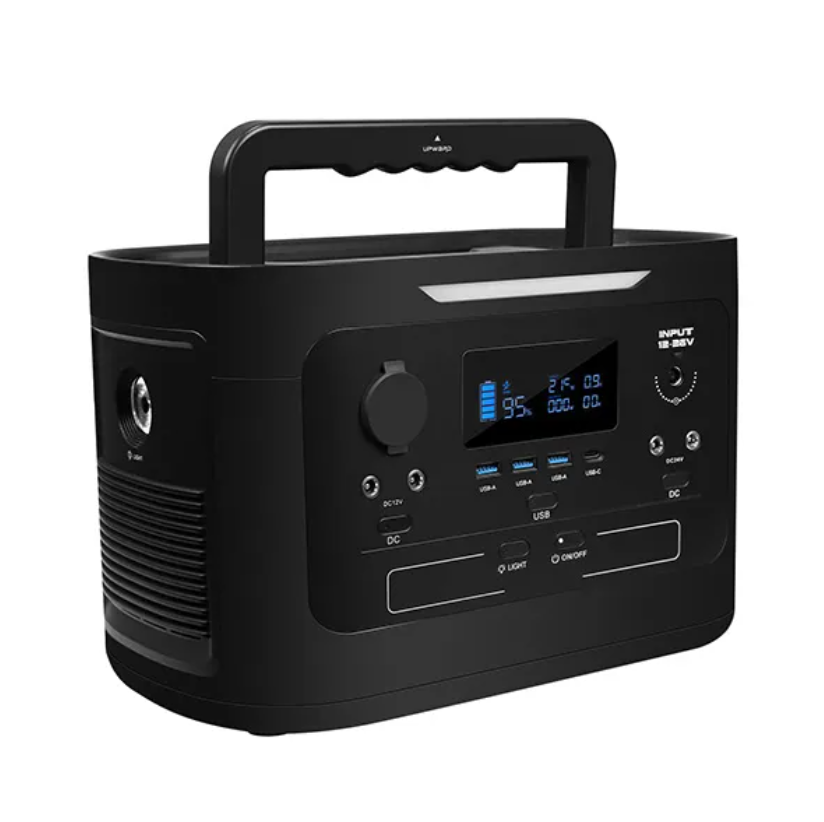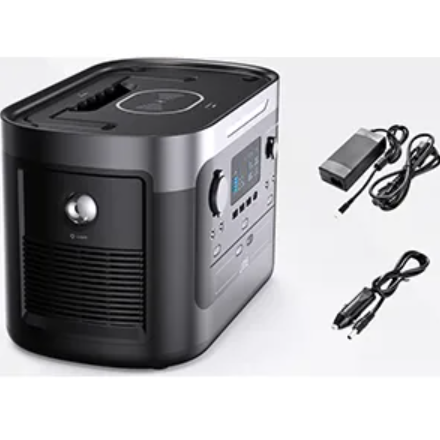Together for An Electric Future.
When planning a camping trip, having a reliable power source is essential for keeping your devices charged, lighting up your campsite, and ensuring you have the comfort and safety you need. With various options available, it can be overwhelming to choose the best power solution for your needs. This guide will help you navigate through the different power sources and provide practical advice for selecting the right one for your next outdoor adventure.
Capacity:
The capacity of a power source determines how much energy it can store and supply. If you plan on powering multiple devices—such as a phone, GPS, camera, or even a camping fridge—you'll need a power source with a higher capacity to ensure you have enough energy throughout your trip. Look for power stations or banks with sufficient watt-hours (Wh) to meet your needs.
Power Output:
Different devices require different levels of power. Make sure that your power source provides enough wattage to operate all of your devices. If you're running several gadgets at once, choose a power source with multiple output ports and sufficient output wattage. For example, devices like laptops or portable stoves need more power than simple gadgets like headlamps or smartphones.
Portability and Ease of Use:
The portability of your power source is key, especially if you’re backpacking or moving between campsites. Compact and lightweight options are ideal for those on the move. Additionally, ease of use is important—choose a power source that is simple to set up, transport, and operate. Devices that are bulky or difficult to manage, like gas generators, may not be the best fit for backpackers or hikers.
Rechargeability:
Rechargeable power sources, such as portable power stations and power banks, are more convenient and eco-friendly than gas generators. Devices that can be recharged using solar panels, car ports, or standard AC wall outlets offer versatility and flexibility. Pay attention to the recharge time, as some devices may take several hours to fully recharge, especially via solar energy.
Durability:
Since your gear will be exposed to the elements, durability is an important factor to consider. Look for rugged, weather-resistant power sources that can withstand outdoor conditions. Brands like Goal Zero are known for their durable designs, which can handle rough environments without compromising performance.
Compatibility:
Ensure that your power source is compatible with the devices you intend to charge. Some portable power stations offer multiple ports, including USB, DC, and AC outlets, making them versatile for various gadgets, from smartphones to laptops.
Fuel Source:
Consider how your power source is recharged or refueled. Solar-powered options are great for camping but require sufficient sunlight, which may not always be available. Gas generators, while powerful, require fuel, which adds extra weight and bulk to your trip. Evaluate your location and power needs to determine the best option for your adventure.

Portable Solar Panels and Chargers:
Solar power is one of the most popular and eco-friendly ways to charge devices while camping. Portable solar panels can be set up at your campsite to harness the sun’s energy, while smaller solar chargers are perfect for backpackers looking for lightweight options. Solar panels are great for charging power banks or running small appliances like lanterns or portable fans. However, solar charging can be slower, especially if the weather is cloudy.
Solar-Powered Generators:
For campers who need more power, solar-powered generators provide a more substantial energy output. These generators can store solar energy and power larger devices, such as camping fridges or even portable heaters. They are an excellent choice for extended camping trips where you need reliable power without relying on traditional fuels.
Portable power stations are compact, rechargeable devices that store energy and can charge multiple gadgets simultaneously. The RHY-PPS1000, for example, is a new portable power station that supports solar and on-board charging. With a capacity of 1060Wh and a peak output of 1800W, it’s ideal for camping, road trips, and outdoor activities. Weighing only 8.5kg, it is portable, durable, and designed with a range of output ports, including AC, DC, USB-A, USB-C, and even wireless charging.
Key features of the RHY-PPS1000 include:
This type of power station offers a versatile solution for those looking for sufficient power without the bulk and noise of a traditional generator.
Gas generators are powerful and capable of running large appliances, such as portable fridges or electric grills. However, they are bulky, noisy, and emit fumes, making them less ideal for camping in quiet or remote areas. Additionally, they require a steady supply of fuel, which may be inconvenient to transport and store. While effective for high-powered needs, many campers avoid gas generators in favor of more eco-friendly and portable solutions.
Safety is paramount when using electricity in the outdoors. Here are some key tips to follow:

With the variety of power sources available for camping, you can easily find the right solution to fit your specific needs. Whether you opt for the portability and eco-friendliness of solar power or the reliability of a gas generator, making sure you have enough power for your trip is key to a successful and comfortable camping experience. The RHY-PPS1000 portable power station is an excellent option for those seeking a balance of capacity, portability, and versatility.
By carefully considering your power requirements and the environment you’ll be camping in, you can choose a reliable power source that ensures your devices stay charged, your campsite stays lit, and your outdoor adventure runs smoothly.